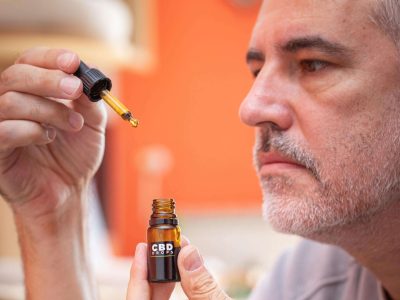You will have ear congestion if your Eustachian tube becomes clogged or not functioning properly. The Eustachian tube is a small canal that links the nose to the middle ear and aids in pressure equalization in the middle ear.
When the Eustachian tube becomes clogged, you experience ear fullness and pressure. You may also have an earache and muffled hearing. These ear congestion symptoms might also be caused by middle ear or ear canal disorders that impact the eardrum (also called the tympanic membrane).
Any ailment that affects your sinuses, such as common colds, allergies, and sinus infections, can cause ear congestion. Air travel and variations in altitude can potentially cause Eustachian tube malfunction, resulting in ear congestion symptoms.
Continue reading to learn more about what might be causing your ear congestion and how to get relief.
Types of Sinusitis
Acute Sinusitis
Sinusitis is considered acute if it resolves completely in fewer than 30 days. A viral infection is frequently the cause of acute sinusitis in patients with a healthy immune system.
Bacteria can sometimes cause acute sinusitis. Infection frequently occurs if something obstructs the sinus passages. A virus that affects the upper respiratory tract is commonly responsible for nasal obstructions. The enlarged mucous membranes of the nasal cavity tend to restrict the sinus passages during a cold.
Sinus air is taken into the bloodstream, causing pain and drawing fluid into the sinuses. This fluid serves as a bacterial growing ground. To tackle the pathogens, white blood cells and more fluid enter the sinuses. This influx adds to the strain and intensifies the pain.
Allergies also produce mucous membrane edema, which closes off the nasal apertures. Furthermore, those with a deviated septum are more likely to have obstructed sinuses.
Chronic Sinusitis
Chronic sinusitis is characterized as having lasted more than 90 days. Doctors aren’t sure what causes chronic sinusitis, although it appears to involve variables that produce chronic inflammation. Chronic allergies, nasal polyps, and exposure to environmental irritants are all factors (such as airborne pollution and tobacco smoke).
Frequently, the individual has a family history, and genetic susceptibility appears to play a component. When a person has a bacterial or fungal infection, the inflammation becomes considerably worse. When an upper tooth abscess extends into the sinus above, it can cause chronic sinusitis of the maxillary sinus.
Sinusitis can also be subacute (lasting 30 to 90 days) or recurrent (4 or more episodes of acute sinusitis per year).
Symptoms of Sinusitis
Acute and chronic sinusitis create similar symptoms, such as
- Pus released from the nose that is yellow or green
- Headache
- Pain and pressure in the face
- Nose congestion and obstruction
- Tenderness (pain when touched) and edema around the afflicted sinuses
- Reduced sense of smell (hyposmia)
- Breath problems (halitosis)
- A productive cough (especially at night)
Some symptoms can help you determine which sinus is infected:
- Pain over the cheeks right behind the eyes, toothache, and headache are all symptoms of maxillary sinusitis.
- A headache across the brow is caused by frontal sinusitis.
- Ethmoid sinusitis causes pain behind the eyes, weeping, and a splitting headache over the forehead.
- Sphenoid sinusitis causes discomfort that is not localized and can be felt in the front or rear of the head.
A person may also feel generally sick (malaise). Fever and chills are also possible, although their presence may indicate that the infection has migrated beyond the sinuses. Acute sinusitis frequently causes more severe pain.
Complications of Sinusitis
The spread of a bacterial infection is the most serious complication of sinusitis. An infection can spread to the tissues around the eye, causing visual abnormalities or edema. In some cases, the infection travels to the eye, causing pain and obscuring vision.
In rare cases, an infection can extend to the tissues around the brain (meningitis), causing severe headaches and confusion. People suffering from sinusitis who acquire such symptoms should see a doctor as soon as possible.
Treatments
Ear tests are a great way to determine your type of infection. Your doctor will ask about your symptoms and use an otoscope or a manometer to check for an ear infection. In this case, the doctor will ascertain whether the cause is viral or bacterial. They may advise you to wait for the ear infection to clear up on its own. If the infection is serious, your doctor may need to pierce your eardrum to allow it to drain.
If the reason is bacterial, you may be given an antibiotic. A pain reliever, such as Tylenol, Advil, or Motrin, should alleviate your discomfort and lower your fever. If your doctor recommends antibiotics, make sure you finish them all to keep the infection from reoccurring. Unfortunately, many people begin to feel better and discontinue their antibiotics, only for the infection to return.
Other ear infection treatments include gargling with salt water, applying hot compresses, and keeping your head erect. Avoid smokers and the areas where they congregate. If ear infections become chronic, surgery may be required.
If you have a sinus infection, your doctor may advise you to wait for it to clear up on its own. Alternatively, your doctor may begin you on an introductory course of antibiotics. Sinus irrigation and over-the-counter mucus thinners are additional options. Steroids and decongestants can also be beneficial.
Your doctor will prescribe you what to do. Antibiotics do not assist some patients who have chronic sinus infections. In some circumstances, surgery may be required. The technique widens the sinus apertures to allow for better drainage.
Book an appointment now to answer all your queries. You can book an appointment with the top ENT Specialists in Karachi through Marham by calling Marham helpline: 0311-1222398 or by online booking facility through the websiteor Marham mobile app.
Frequently Asked Questions(FAQs)
1- Is it possible to have a sinus infection and an ear infection simultaneously?
Yes. Fluid can become trapped in the ear behind the eardrum due to a sinus infection. Bacteria and viruses can grow in the ear and produce an infection.
2- What is the best sinus and ear antibiotic?
While amoxicillin (Amoxil) is suitable for uncomplicated acute sinus infections, many clinicians choose amoxicillin-clavulanate (Augmentin) as the first-line antibiotic. Amoxicillin typically kills most bacterial strains.
3- How long does it usually take to recover from a sinus and ear infection?
Unless a bacterial infection develops, most instances disappear within a week to ten days. In most cases, home remedies are sufficient to treat acute sinusitis.








Comments